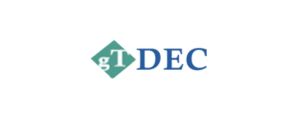Objectives: The objective of this presentation is to explore and evaluate innovative treatment modalities for keloids, with a focus on intralesional chemotherapy and contact cryotherapy. By examining the limitations of traditional approaches such as surgery and intralesional corticosteroids, this session aims to highlight the mechanisms, efficacy, and safety profiles of these emerging therapies. Additionally, the presentation seeks to provide clinicians with evidence-based insights and practical guidance on integrating these novel treatments into clinical practice to achieve superior patient outcomes and
Introduction: The objective of this presentation is to explore and evaluate innovative treatment modalities for keloids, with a focus on intralesional chemotherapy and contact cryotherapy. By examining the limitations of traditional approaches such as surgery and intralesional corticosteroids, this session aims to highlight the mechanisms, efficacy, and safety profiles of these emerging therapies. Additionally, the presentation seeks to provide clinicians with evidence-based insights and practical guidance on integrating these novel treatments into clinical practice to achieve superior patient outcomes and
Materials / method: Intralesional chemotherapy and contact cryotherapy have emerged as promising yet underutilized alternatives in the management of keloids. Intralesional chemotherapy, employing agents such as 5-fluorouracil, vincristine, and docetaxel, directly targets fibroblast proliferation and collagen synthesis, providing a mechanism-driven approach to reducing keloid size and alleviating symptoms. Recent clinical studies have shown high response rates in appropriately selected patients, with significantly lower recurrence rates compared to traditional therapies.
Results: Contact cryotherapy results in cold-induced tissue destruction. Unlike traditional spray cryotherapy, contact cryotherapy achieves uniform tissue freezing while sparing surrounding healthy skin, leading to improved clinical outcomes. Cryotherapy not only reduces keloid volume effectively but also enhances symptom relief and prevents recurrence when used as a monotherapy or in combination with other modalities.
Conclusion: This presentation will review the evidence supporting the efficacy and safety of these innovative treatment modalities, highlighting their potential to transform the current paradigm of keloid management. By leveraging the unique mechanisms of intralesional chemotherapy and the precision of contact cryotherapy, clinicians can achieve superior outcomes, reduce recurrence rates, and improve the quality of life for patients with keloids.
Divulgação de informações
Você recebeu algum patrocínio para sua pesquisa neste tema?
Não
Você recebeu algum tipo de honorário, pagamento ou outra forma de compensação por seu trabalho neste estudo?
Não
Você possui relação financeira com alguma entidade que possa competir com os medicamentos, materiais ou instrumentos abordados no seu estudo?
Não
Você detém ou pediu a registro de patente para algum dos instrumentos, medicamentos ou materiais abordados no seu estudo?
Não
Este trabalho não recebeu nenhum patrocínio direto ou indireto. O mesmo está sob a própria responsabilidade do seu autor.















